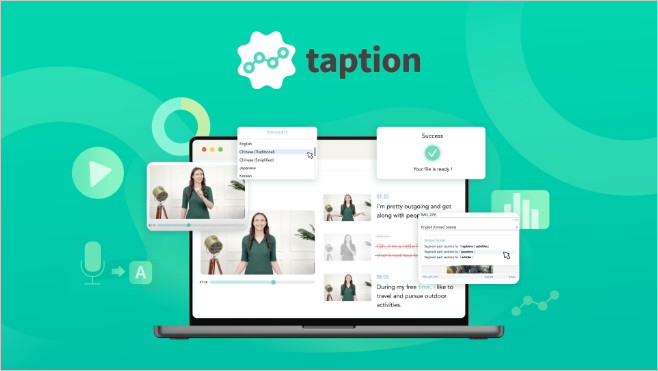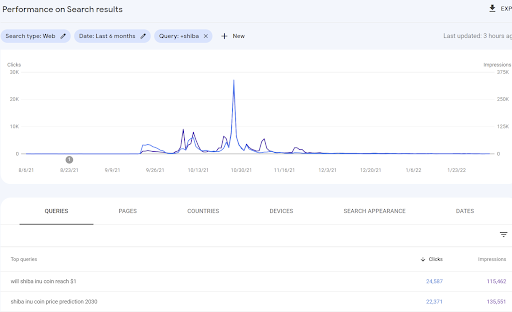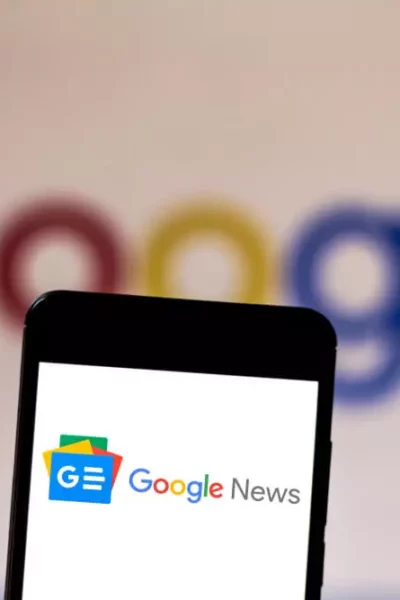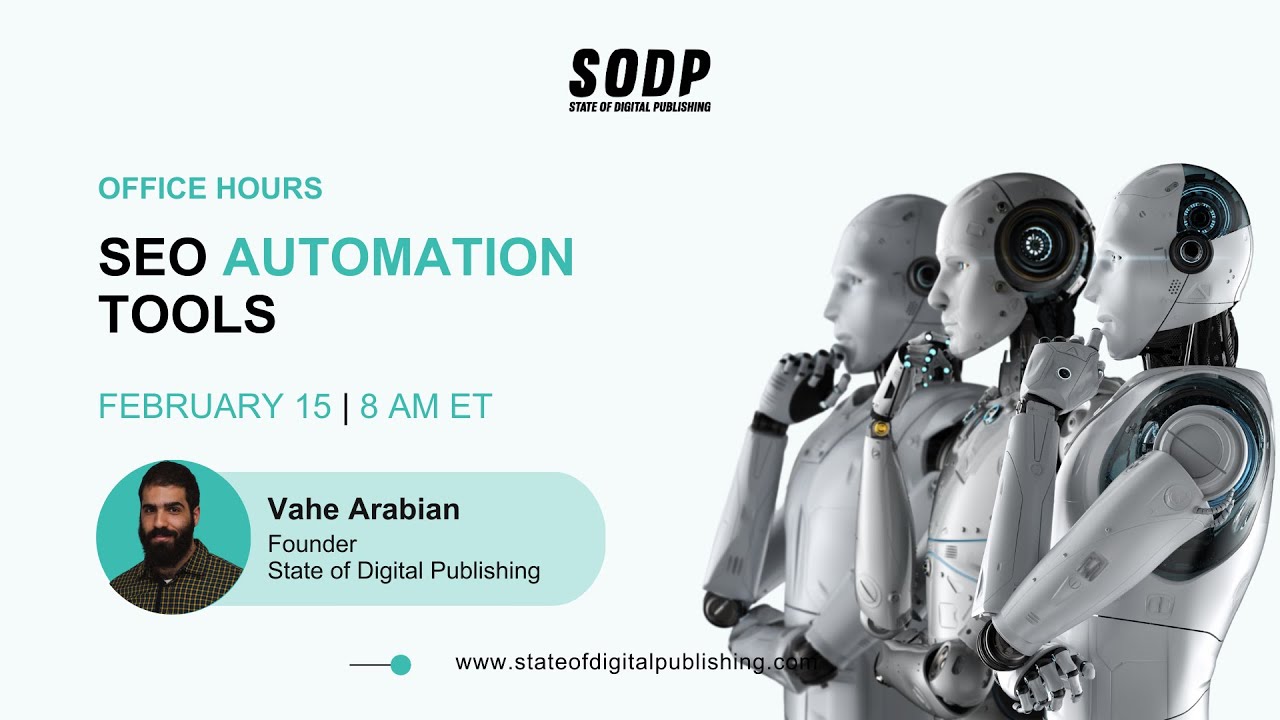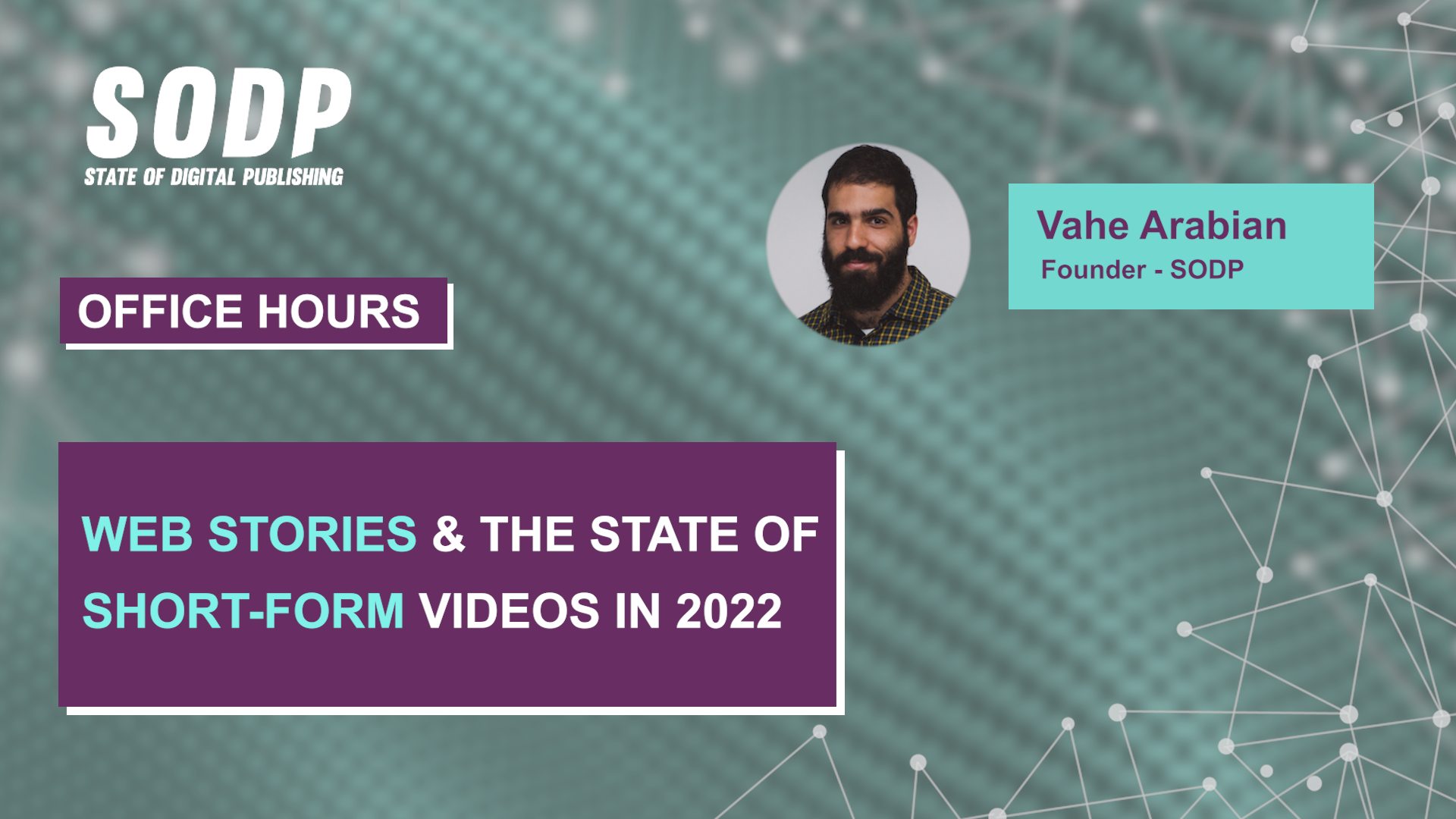Appearing in Google’s Top Stories carousel is the holy grail for digital news publishers. It not only provides great exposure for news content — appearing above relevant Google Search results — but is a great way to boost organic web traffic.
The Top Stories carousel is a search engine results page (SERP) feature that leverages the full power of machine learning to search, rank, and curate news articles. It aims to provide readers with a modern and attractive interface that displays useful and timely articles from a broad range of high-quality and trustworthy news providers.
But while site owners looking to appear in Google’s news carousel should focus on producing high-quality content, that alone is not enough to guarantee that it will surface. There are a range of other regularly updated ranking factors to consider.
Moreover, while Google has said even non-news pages are eligible(1) to appear in the carousel section, the reality of this is a little more complex. Google is more likely to select web pages for the SERP feature that adhere to its best practices for Google News(2), meaning stories that already rank at or near the top of Google News have a better chance of being selected for the Top Stories carousel.
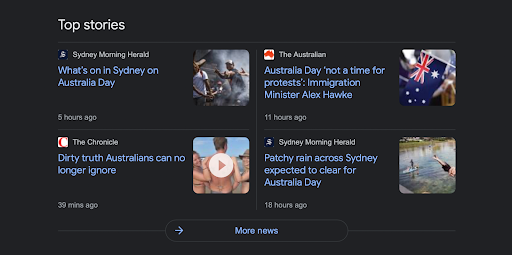
Table of Contents
The Top Stories Carousel’s Attraction
Leading news sites are well aware of the power of placing in the carousel, with Richard Nazarewicz(3), the Wall Street Journal’s technical SEO manager, describing it as the “most coveted spot for fresh or breaking news to surface within the Google Search ecosystem.”
The desire to appear in the Top Stories carousel for mobile and desktop SERPs has, Nazarewicz argues, driven every newsroom to embrace SEO optimization through the use of Google Trends, competitor analysis, and A/B testing SEO headlines.
He added: “Just like any regular article, they need to be linked to from a prominent position like the homepage and included in a dedicated sitemap for fresh or breaking news from 48 to 72 hours before being moved into a regular article archive sitemap depending on your setup.”
Moreover, while newly published pages may take weeks or even months to show up in SERPs, they could show up in a Top Stories card almost immediately.
Page Experience Update
Google Removes AMP Pages as a Ranking Factor
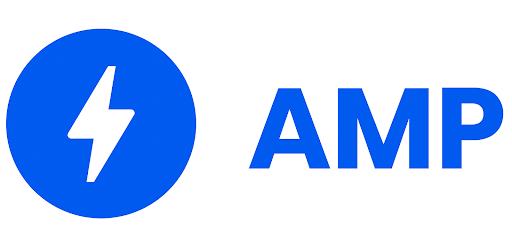
While it was previously the case that only accelerated mobile page (AMP) pages were eligible for a place in the Top Stories feature, this is no longer the case. Google changed this in June 2021 with the implementation of the Page Experience Update(4).
The update included several developments, with page experience scores becoming the predominant ranking element for the Google Top Stories carousel.
Moving to include previously ineligible content is explained in Google’s Core Web Vitals & Page Experience FAQs(5), which states that while the AMP project is “committed to ensuring site owners are getting a great start toward a performant experience when creating AMP pages […] like many other frameworks, AMP can’t implement all web development best practices.”
As part of this, Google retired the AMP icon, and the swiping interaction was removed from the AMP viewer. With the inclusion of non-AMP content, Google could no longer guarantee instant loading from the AMP cache and removed the swiping feature to ensure an optimal user experience.
Inclusion of Non-News Sites
Along with ending AMP priority, the June 2021 update contained two other significant changes. The first of these meant that pages featured in the Top Stories carousel no longer needed to be strictly a news site or be registered with Google News.
Prioritizing Core Web Vitals
The other major change was a move to prioritizing core web vitals (CWV). To accompany this Google also launched a new page experience report in Google Search Console, to offer “valuable metrics, such as the percentage of URLs with good page experience and search impressions over time, enabling [developers] to quickly evaluate performance”.
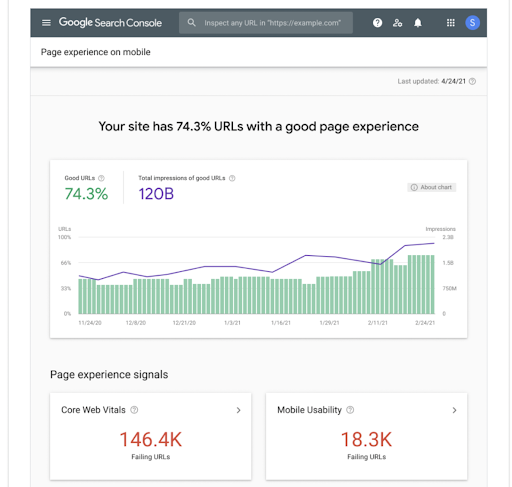
Google has provided a detailed guide(6) for developers looking to maximize site performance and provide a reliable web experience while working within the AMP HTML protocol.
The Competition Intensifies
With these recent changes to the carousel, non-AMP pages previously deemed ineligible are now in the running for one of these coveted Top Stories spots. And it didn’t take long for the effects of these changes to be felt.
Only a month after the changes started to roll out, 12% of Top Stories in the carousel were from non-AMP sites, according to John Shehata(7), founder of NewzDash.
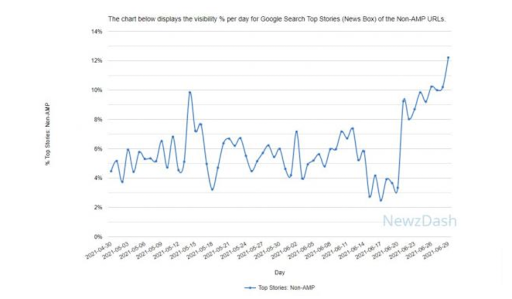
In December 2021, Google rolled out new Top Stories layouts (8), with the feature now including story stacks and a mixture of thumbnail image sizes.
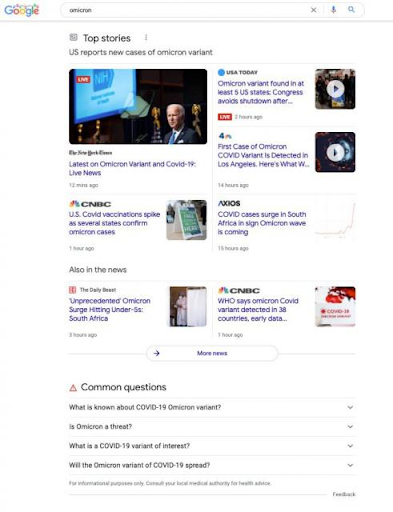
With competition more intense than ever, it’s vital that publishers understand and embrace best practices to give themselves the best possible chance of appearing in the carousel.
Best Practices for Publishers
Follow Google News Criteria
With the majority of carousel results coming from the top Google News results, appearing in the Top Stories carousel requires “winning” at Google News SEO(9).
Publishers should focus on optimizing their headlines – both H1 and H2 — while bearing in mind that Google sometimes prefers a sub-headline, picking it up for Top Stories. Publishers also need to focus on URLs that exactly target user searches.
Given that Google favours timeliness, prioritizing the rapid publication of breaking or trending news is another recommended strategy. So too is linking to existing news or content pieces to create a story cluster.
At the same time, site owners must also follow Google’s guidelines and policies for Google News.
To be considered for the Top Stories section, articles should not include any content that is deemed to be:
- Dangerous
- Deceptive
- Hateful
- Manipulated
- Medical
- Sexually explicit
- Violent and gory
- Vulgar and profane
- Of a harassing nature
- Of a terrorism nature
Further to this, there are more detailed criteria regarding sponsored content, misleading content, and transparency.
Google has published its news’ policies(10) to give publishers a deeper understanding of the parameters they should follow.
Use Google Trends to Track Topical Interest and Breaking Stories
While Google Trends(11) is more commonly associated with keyword research and trend analysis for SEO, it’s also a great tool for publishers looking to keep abreast of search interest. This can then help them to publish timely stories that can rank for Top Stories.
Scrolling down the Google Trends homepage leads to the “Recently trending” search that gives a surface-level view of topics with the most search traction. Clicking on “More trending searches(12)” presents the user with either “Daily search trends” or “Realtime search trends”, with the option to filter by geographical location. The Real-time search trends section covers the preceding 24 hours of Google searches and provides an option to filter by category, which includes the “Top stories” option.
While these options are great for gaining an overview of search interest by segment, the tool also allows publishers to drill down into a particular subject to understand what Google users are searching for over the past hour, as well as the trajectory of interest in related topics and queries.
Vahe Arabian, the founder of State of Digital Publishing (SODP), notes that publishers can use Google Trends(13) to drive interest in their evergreen content, which can lead to story syndication. The aim here is to secure a bunch of organic backlinks, which will improve the content’s ranking in the long run.
Google Trends is free, relatively straightforward to use, and provides powerful insights into reader interest. Understanding what users want to know, as well as where the next interest spike might pop up, will give editorial teams a better chance of tailoring their coverage to compete for a carousel spot.
Case Study
Who: Gizmo Story(14)
Site coverage: Movies, TV, and entertainment news and reviews
Project: Gizmo Story needed help lifting its monthly visitor traffic.
Outcome: Traffic increased from 7,000 monthly visits to 50,000 in a four-week period.
SODP devised a content pillar and cluster strategy to help boost our client’s traffic. Part of our content strategy was to focus on movie genre ranking lists, as these capitalize on weekend user search trends. We also focused on documenting monthly new releases, thereby tapping into interest from binge-watchers.
A more long-tail oriented strategy allowed Gizmo Story to compete against larger media sites.
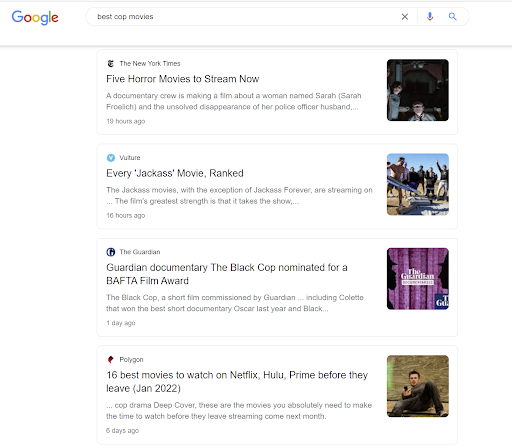
The long-term objective was to both increase the organic traffic search baseline while also becoming more discoverable in SERP features such as “People Also Ask”.
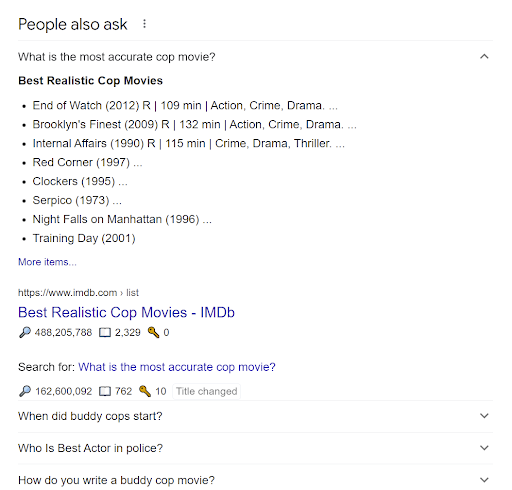
The end result was that Gizmo Story’s content was picked up by Top Stories, it entered the top 10 rankings in less than a week, and received mentions from leading Hollywood directors William Friedkin(15) and John Fusco(16).
Focus on Overall Page Quality
When it comes to ranking news-oriented pages and news-like content for Top Stories, Google uses similar criteria to Google News. The search engine has stated that all publishers need to do to appear in Top Stories via search results is to “produce high-quality content and comply with Google News content policies”1.
This means that technically any site that is not in contravention of Google News policy can appear in Top Stories. However, in reality, it is a rare feat for most sites to appear in these search results.
The Google algorithm takes several factors into account when ranking new sites. These include:
Relevance of the story to the user’s query.
Prominence of articles that are currently trending.
E-A-T, which Google talks at length about and which it defines as “expertise, authoritativeness, and trustworthiness” of the main content, its creator, as well as the website. While E-A-T is not technically a ranking factor, it is mentioned 135 times in the Google Search Quality Guidelines(17), (PDF download) emphasizing the importance of quality, trustworthy news content.
Furthermore, a study by Magna Media Trials and Disney Advertising Sales found that brand safety for news sites(18) (PDF download) and their advertisers relies heavily on the quality of news content.
As Asaf Davidov(19), VP of measurement and insights, Disney Ad Sales, puts it, newsreaders are “a smart and curious audience, who are interested in learning about the world around them. Tailoring your message accordingly matters and trustworthiness matters.”
The bottom line? Ensuring news content maintains E-A-T not only gives site owners the best shot at gaining a coveted spot in Top Stories, but it also allows them to grow their brand trust, brand safety and maximize their advertising revenue.
For authors looking to self-assess the quality of their content before publication, Google suggests they ask themselves the following questions:
- Does the content provide original insights, reporting, and analysis?
- Does the content provide a thorough, comprehensive overview of the topic at hand?
- Does the content offer a fresh perspective when drawing from other sources, or is it merely parroting previous work?
- Does the headline provide a descriptive and helpful overview of the topic?
Use Structured Data To Markup Your Articles
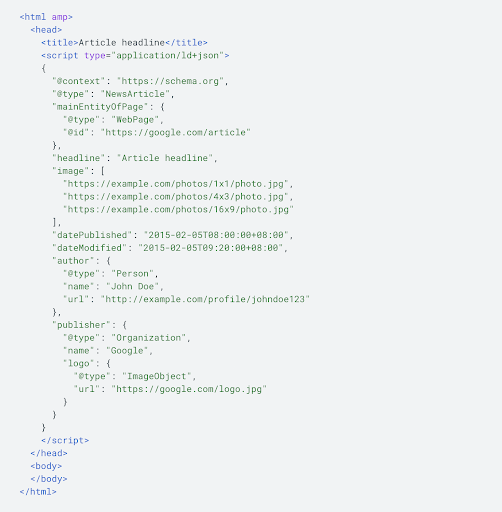
The Top Stories carousel is, according to Google(20), a container that includes articles, live blogs, and videos.
For Google to search, rank, and curate timely articles dealing with particular keywords, site owners need to use article-specific structured data.
Adding structured data to web pages and blogs allows Google to learn more about a website and the search engine advises adding one or more of the four article subtype schemas — NewsArticle, BlogPosting and its subtype LiveBlogPosting, DiscussionForumPosting, and VideoObject — in order to qualify for the carousel feature.
Optimize Images in Structured Data
Google will use an article image for the thumbnails in both Top Stories and the Top Stories carousel. The search giant checks the “image” attribute in the page’s structured data to see if it can be used as a featured image. Here’s where things get a little tricky, however.
Google has said images in an AMP article must meet certain requirements(21) in order to appear in the carousel, while those in non-AMP articles are not bound by the same rules. But after Google threw out the AMP requirement to appear in the carousel, what does that mean for image optimization requirements?
While AMP and non-AMP articles must adhere to a largely similar list of conditions — such as the need to contain a URL to a representative image — they do have different size requirements.
Non-AMP articles are required to contain an image at least 696 pixels wide, while an AMP article image should be at least 1,200 pixels wide.
Google also has several guidelines that publishers need to follow when formatting their logos(22). For example, images must use either the .jpg, .png, or gif formats must be a rectangle and must be 160×50 pixels or 600×60 pixels in size.
Page Experience Ranking Factor
With the changes to ranking factors for the Top Stories carousel changing last year, out went AMP requirements and in came Page Experience. This rollout started for mobile devices in August 2021 and became a ranking factor on desktops from February 2022.
Page experience is, as Google describes it(23), a set of signals that measure how users perceive the experience of interacting with a web page beyond its information value.
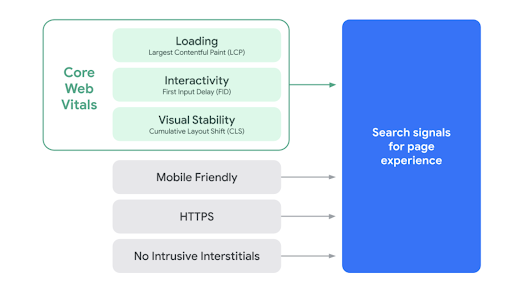
A number of signals are used for this ranking metric, including:
Core Web Vitals
Core web vitals (CWV) ensure the page delivers a good user experience based on loading, interactivity, and visual stability. There are three main CWV strands:
Largest Contextual Paint (LCP), which measures loading performance. Optimal LCP should occur within 2.5 seconds of a page starting to load.
First Input Delay (FID), which measures interactivity. Optimal FID is less than 100 milliseconds.
Cumulative Layout Shift (CLS), which measures visual stability. For optimal user experience, a site’s CLS score should be less than 0.1.
Several first and third-party tools can be used to monitor and assess CWVs for ongoing improvement.
Use of HTTPS
It may seem simple, but ensuring a site is served over HTTPS is a vital element of page experience. (On a side note, Google has also been using HTTPS as a ranking factor(24) since 2014).
Mobile-Friendly
Whether a site is an AMP version or not, it must be mobile-friendly. Developers can check if their site is mobile-friendly via this mobile-friendly test(25).
Lack of Intrusive Interstitials
The content on the news site must be easily accessible to users and follows Google’s guidelines around interstitial ad placement(26).
Troubleshooting Top Stories Performance
Publishers can frequently find themselves asking why their site isn’t surfacing on Top Stories even after having checked off all of the above steps. In situations such as these, there are a few things to consider.
Technical SEO Issues
Site issues deriving from a lack of website upkeep — such as updating internal links to maintain server performance — can ultimately slow down or impede search engines’ ability to crawl and index an article.
Content from our partners
Focus on adhering to the Google News technical guidelines through regularly scheduled site hygiene checks with SEO specialists and/or internal development teams.
Publishing Approaches
As with evergreen content, it’s important to focus on related stories that can send topical signals and original reporting on a breaking story.
Publishing coverage of a breaking news story within a five-minute window(27) (jump to comments by Claudio Cabrera, the New York Times’ deputy off-platform director, at 27:45) increases the chances of appearing in Top Stories. The story may also require updates every 5-15 minutes to break into the top three results.
Publishers shouldn’t try to cover a breaking story fully if it means they’ll miss out on ranking for timeliness. As long as the first article is accurate, publishers can follow up with a more detailed story at a later date and produce at least 150 words to get the article indexed.
Articles may fail to appear in Top Stories, even if they are ranking Google News’ first page. Linking between related articles and periodically optimizing the headline can help to address this issue, allowing the article to then compete with rival posts on the basis of relevance and timeliness.
Topic competition
Publishers should also consider a covered topic’s competitiveness. A perfect example of this would be the likelihood of ranking for a “bitcoin” story when direct crypto and mainstream media outlets with established E-A-T are also providing coverage.
Considering the above Gizmo Story example, publishers need to focus on angles that are trend worthy, less competitive, and provide a unique perspective.
The below image highlights a more flexible approach to the coverage of Shiba Inu’s price increase by one of SODP’s clients. Instead of focusing on the cryptocurrency’s background (the route many mainstream media outlets opted to follow), the SODP team worked to develop alternative story angles to match evolving reader interest. One such story was “Will Shiba Inu Coin Reach $1”, which was inspired by a surge in users trying to find price predictions.
Question of Credibility
One of the factors that new publishers commonly underestimate is a site’s link profile, which contributes to its E-A-T signals.
This does not mean traditional link building needs to be conducted, but publishers should look at syndicating their content or encouraging similar websites to reference their content as a news source.
Case Study
Who: Niche publishing client
Site coverage: Sports news
Project: Help leverage the client’s organic growth into Top Stories appearances.
Outcome: The client not only surfaced in Top Stories but also Top Trending stories.
SODP helped to grow a start-up sports publisher’s reach from 20,000 to 100,000 monthly users in less than six months.
We worked to reduce story repetition — for instance, updating a single post with weekly top scores instead of publishing new posts each week — and produce more original stories. We also advised the client on fundamental E-A-T best practices — author profiles, offsite listings, and more — which helped to increase the site traffic baseline to under 200,000 monthly users.
Despite the surge in traffic, the site still was not surfacing in Top Stories.
SODP identified that rival sites appearing in Top Stories were benefiting from strong link profiles with other news websites that also surfaced in Top Stories.
We worked to leverage the client’s contacts to develop content syndication partnerships while also pitching the client’s content to freelance journalists as a source for use across a number of publications that were also ranking in Top Stories. These efforts translated into our client surfacing in Top Stories,Google Discover, and in Google Trends’ Top stories section. The upshot was that the client experienced an uptick in ad revenue that led to profitability.
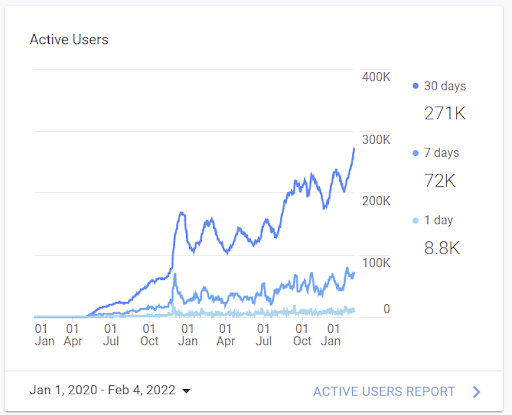
Final Thoughts
Appearing in the Top Stories carousel is a surefire way for digital publishers to gain valuable exposure, drive organic site traffic, grow brand trust, and monetize their site for long-term growth.
With constant Google updates and algorithm refinements, developers, site owners, and news authors must stay abreast of the latest ranking factors and continue to produce high-quality content coupled with an exemplary page experience.
- Appear on other News surfaces – Publisher Center Help
- Best practices for your article pages – Publisher Center Help
- SEJ: A Guide to Optimizing for Google News, Top Stories, and Discover
- Evaluating page experience for a better web | Google Search Central Blog
- Google Search Help Console: Core Web Vitals & Page Experience FAQs (Updated: March 2021)
- Google: More time, tools, and details on the page experience update
- https://twitter.com/JShehata/status/1409935118043582474
- Google Rolling Out New Top Stories Layouts
- State of Digital Publishing: THE ULTIMATE GUIDE TO GOOGLE NEWS SEO
- Google News policies – Publisher Center Help
- Google Trends
- Realtime Search Trends
- Office Hours – International Google News SEO, November 2nd, 2021
- Gizmo Story
- https://twitter.com/williamfriedkin/status/1342556638503292928?s=24
- https://twitter.com/johnfusco12/status/1341011803468410880?s=24
- General Guidelines
- The “reliability and quality” of news content and brand safety – MAGNA
- Understand how AMP looks in search results
- Learn About Article Schema Markup | Google Search Central
- What is the Publisher Logo Guideline
- Understanding Page Experience In Google Search Results
- HTTPS as a ranking signal | Google Search Central Blog
- Mobile-Friendly Test – Google Search Console
- Interstitial ad guidance – Google AdMob Help
- State of Digital Publishing: HOW TO THRIVE IN GOOGLE NEWS






